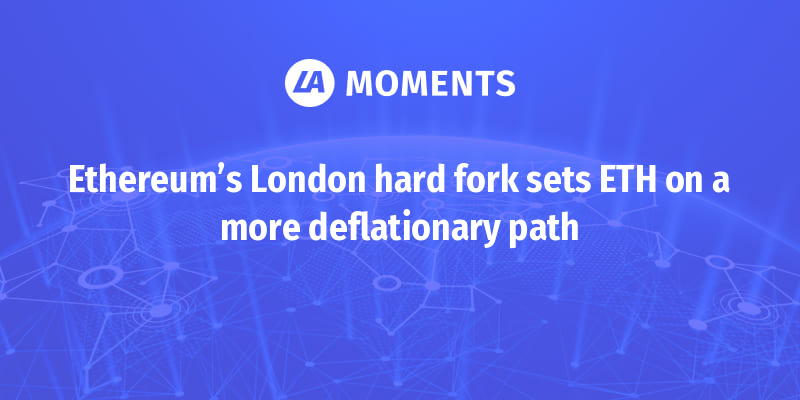The London hard fork of Ethereum, which went live on Aug. 5, ushered in a new era for the transition to Ethereum 2.0, a complete proof-of-stake (PoS) blockchain. In fact, the London upgrade is the penultimate step on the way to the final transition to PoS scheduled sometime in 2022. The upgrade got triggered almost on time at 12:33 pm UTC at the block height of 12,965,000.
Along with the highly anticipated Ethereum Improvement Proposal (EIP) 1559, this upgrade brings four other EIPs to the network, EIP-3554, EIP-3541, EIP-3198 and EIP-3529. The main change that EIP-1559 brought is the management of transaction fees on the blockchain. In the previous pricing mechanism, the transaction fees would go to the miner directly, but now, there is a fixed-per-block network fee that is burned. This eventually means a lower revenue from transaction fees for miners.
A representative from ConsenSys, a blockchain technology company backing Ethereum’s infrastructure, told Cointelegraph about the enthusiasm of network users when compared to the initial discontent of the miners:
“Users seem much more supportive of the hard fork because this provides them with more predictable gas fees. As of today, 97,5% of clients are ready for the London hard fork. This is why EIP-1559 became mainstream among the community and is the most important proposal approved by the Ethereum community included in the London Hard Fork.”
